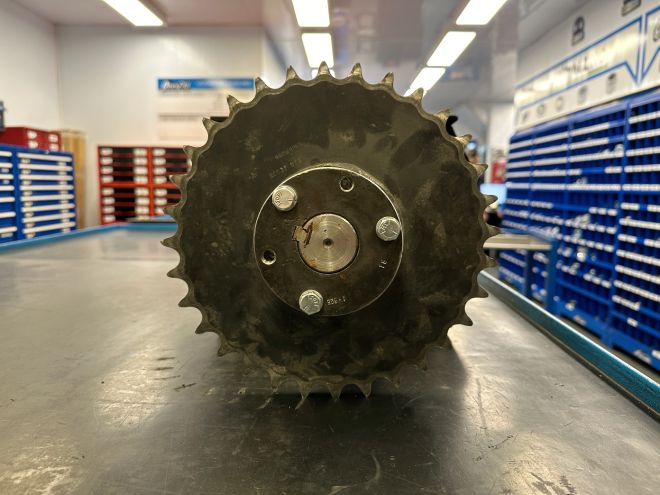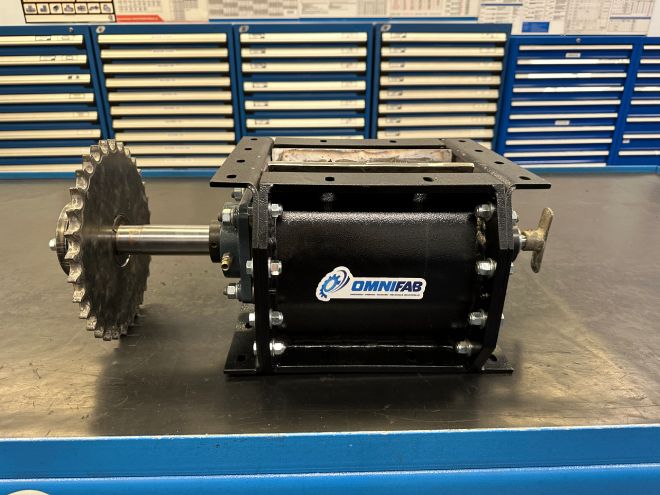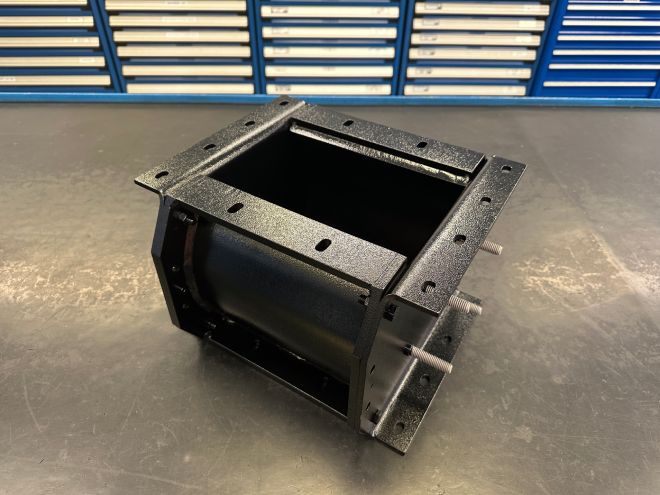- Industrial sector, Mining sector -
Omnifab Details the Execution of an Urgent Task: Repairing a Rotary Valve
Home > Realisations > Omnifab Details the Execution of an Urgent Task: Repairing a Rotary Valve
Recently, one of our clients, primarily engaged in the manufacturing of building materials, including cement powder, called upon our emergency services to address a malfunctioning rotary valve. This fault led to a shutdown of the factory operations. Our team had to mobilize quickly to intervene in the shortest possible timeframe, allowing the client to resume their activities without experiencing any negative impact.
Our experts in industrial mechanical design and fabrication took the time to explain what a rotary valve is, the complete process of the intervention, and the various services involved during the operation.


What is a Rotary Valve?
To begin, let’s clarify that the issue was with the valve’s housing. This part serves as the main structure that supports and holds the components of the rotary valve in place.
The rotary valve itself is a mechanical device often used to control the flow of liquids, fluids, or even gases through a piping system.
A valve housing is normally constructed from sturdy materials such as steel, aluminum, or other corrosion-resistant alloys. This durability is essential since it forms the foundation for the valve’s moving components. It must, therefore, be strong and stable. Key elements of the housing usually include the valve body, shaft support, inlet and outlet ports, as well as other components necessary for the valve’s operation.
What Were the Client’s Needs?
As mentioned in the introduction, the company was stuck with a faulty rotary valve, forcing them to shut down operations. The original valve’s housing, made of aluminum, was broken, impeding the machine’s normal functioning.
The client’s primary concern for the repair was ensuring it could be completed swiftly, so that the valve could be reinstalled and the machine brought back into operation as quickly as possible.
How Did Omnifab Proceed with the Rebuilding of the Rotary Valve?
Upon receiving the call for this emergency operation, our team set out to retrieve the problematic part. We did not have to dismantle it, as it had been previously taken apart in-house. Therefore, we had the rotary valve in our possession by Monday morning.

Elements such as carbon, manganese, sulfur, and phosphorus are generally present in defined proportions within it. Moreover, it is a metal with high tensile strength, meaning it can withstand a fair amount of force without deforming. This steel is also known for being well-suited for welding, making it ideal for our rebuilding project.
So, our experts conducted a dimensional report and took measurements before starting the production of a new housing. Of course, to achieve our goals, several departments were involved in this project: laser cutting, bending, machining, painting, mechanics, and shipping.
Worth noting: the machining was performed on conventional lathes, and our professional welders used fluxcore welding.
For machining, we had to machine everything internally to a tolerance threshold of 0.025 on both inner walls of the impeller. We then completely rebuilt the impeller blades to ensure that we were able to gain our 0.025 margin between the walls and the impeller.
The impeller and the sprocket are the two components of the rotary valves that were not refurbished. However, we still replaced the shaft inside the impeller because our team noticed, on opening the old housing, that it was badly worn at its ends, around the bearing seats. The shaft was rebuilt using 1020 cold-rolled steel.
Better safe than sorry
At Omnifab, we prefer to be proactive. That’s why, while rebuilding the rotary valve, our industrial design department updated its plans. This way, should a similar situation arise again at Lafarge Holcim, we would be able to respond immediately, within even shorter timeframes than before.
Do you have industrial equipment to restore?
At Omnifab, your emergencies are our priorities!
Thanks to the collaboration between each of our departments and the expertise of our teams, we were able to return the rebuilt rotary valve, even stronger than before, on the Friday following the mandate reception. As a result, the client was quickly able to resume operations with less than a week of downtime.
At Omnifab, we handle your emergencies as if they were our own: by providing quality, efficient, and meticulous work. If you find yourself in a situation like this, or need to replace or rebuild a part, our experts are the ones to call.


